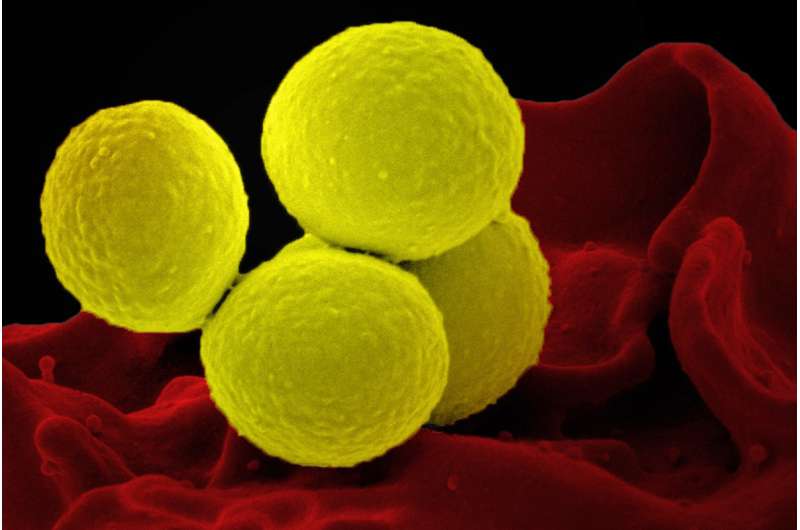Combination therapy promising against blindness-causing bacterial keratitis

Multidrug-resistant bacterial infections of the cornea are a leading cause of blindness and cannot be effectively managed with current ophthalmic antibiotics. A team of investigators has now devised a combination therapy that largely circumvents resistance, and quickly and effectively eradicated bacterial keratitis in 70 percent of animal models treated. The research is published in Antimicrobial Agents and Chemotherapy, a journal of the American Society for Microbiology.
Staphylococcus aureus and Pseudomonas aeruginosa are the leading causes of bacterial keratitis, an infection of the cornea. Fast, effective antimicrobial treatment is required to prevent scarring, corneal perforation, and/or endophthalmitis, an inflammation of the eye's interior.
"I have witnessed first-hand patients who have failed all commercially available antibiotic therapies who, in the face of rapidly deteriorating vision, are desperate for effective therapies," said corresponding author Rachel Wozniak, MD, Ph.D., Assistant Professor of Ophthalmology, University of Rochester Medical Center, Rochester, NY. "Unfortunately, this occurs all too often, as resistance to levofloxacin, the last antibiotic approved for this indication, can be as high as 72 percent for some bacterial infections."
The investigators chose to develop a combination therapy with existing antimicrobials rather than a new compound because they anticipated that doing so would be considerably faster, said co-corresponding author Paul Dunman, Ph.D., Associate Professor of Microbiology and Immunology, University of Rochester Medical Center, Rochester NY.
"Our discovery platform was based on polymyxin B/trimethoprim (PT), a currently available ophthalmic antibiotic used to treat mild ocular infections such as conjunctivitis, but with narrow use in serious infections due to its slow-acting antimicrobial activity," said Dr. Wozniak. "Using high throughput screening of FDA approved drugs in combination with PT, we identified PT plus rifampicin as a lethal antibacterial combination toward both drug-resistant S. aureus and Pseudomonas aeruginosa, two predominant causes of bacterial corneal infections."
The improved activities of the combination is almost certainly due to each component having an independent mechanism of antimicrobial action, according to the report. Rifampicin inhibits bacterial DNA transcription by binding to the enzyme that assembles ribonucleotide bases into RNA. Trimethoprim inhibits bacterial DNA synthesis. Polymyxin B acts as a detergent, disrupting the oily outer and inner membranes primarily of Gram-negative bacteria—a category which includes both S. aureus and P. aeruginosa.
That membrane-disruptive activity of polymyxin B may also improve antibiotic penetration, thereby adding to the combination's effectiveness, the investigators speculate.
The combination has shown a low rate of development of spontaneous resistance, which is likely is due to the need for multiple simultaneous mutations to evade the combination's multiple modes of attack, according to the report. This common strategy has been used against resistance notably in HIV, malaria, and tuberculosis.
"While there may be unforeseen effects of combination drugs with respect to toxicity, both rifampicin and PT are currently FDA-approved drugs with favorable safety profiles, and thus their combination may provide a significant advantage for further drug development," according to the report.
In preclinical testing on mouse models, the combination therapy eradicated infections in 70 percent of treated animals, according to the report.
Globally, bacterial keratitis is a leading cause of blindness, with two million new cases annually. In the United States, overnight contact lens wear is the leading cause of keratitis, and an estimated 30,000 new cases occur annually.



















